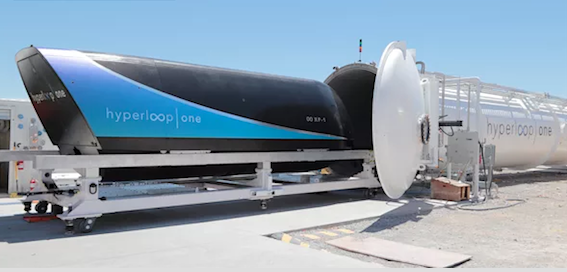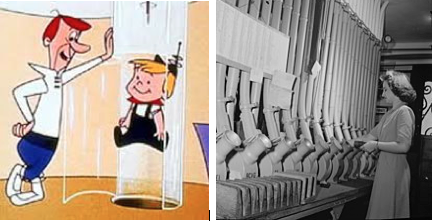So, you’re probably thinking, what on earth is this guy going on about in the title of this paper that I am about to venture into.
Well, when asked what I am most interested and rather enthusiastic about at this stage in my career and personal life, the headline presented at the uppermost part of the page is often the response I get from family, friends, work colleagues and even random strangers I have the pleasure of sitting next to in the rather minuscule seats of economy class when I travel.
When conversation usually ensues, I often deliver a rather theatrical narration of what this ‘thing’ I am so fascinated by and believe is the future, which is, the ‘Hyperloop.’
I currently work for a large global organization that deals with container shipping as well as transport and logistics. I have been tasked together with a group of young individuals to travel to, and subsequently present our idea of the Hyperloop to the top executives in Silicon Valley next month.
In the midst of the 4th Industrial Revolution that the world is currently experiencing, we effectively have to try convince these top executives, who may actually have worked in this industry longer than some of us have been alive, to start looking at the potential of the Hyperloop technology as new form of innovation in the transportation industry. The proposal forms around how our organisation can either be completely disrupted by or take full advantage of this massive opportunity that this technology presents. Honestly, I prefer the latter.
If you don’t know what the Hyperloop is, it may very well be your ride to work in the not so distant future. The Hyperloop is a new mode of transportation, essentially the “5th Mode” that the world will see as labeled by the brainchild of the idea in his 2013 White Paper, Mr. Elon Musk.
Attempting to explain what this technology is and how it will work is not the easiest of tasks, but I shall do so in its simplest form, here goes nothing.
Try to envisage travelling uninterrupted at speeds of up to 600 mph, yeah you read right, ‘Miles -Per-Hour’, and for those of you that prefer using the metric system, it equates to 965 kph.
Doesn’t seem realistic let alone feasible right? Let me describe how this may actually be possible.

The Hyperloop simply put, a pod (capsule) moving in a tube that is either above or below the surface of the earth, where the pod will transport people seated inside, from one destination to another. The Hyperloop pod uses an electric motor, which can be broken up into two simple components, a Stator and a Rotor. The Stator is stationary and the Rotor rotates. However, unlike a normal electric motor that is circular, the Hyperloop motor is linear, where the Rotor is on the pod that will move along the Stator, which is attached to the tube. The pod is propelled magnetically as it moves over the Stator.
The Hyperloop uses unique magnetic levitation technology to help lift and guide the pod off the track. What allows the pod to move at these incredible speeds is due to the removal of almost all the air in the tube by a series of vacuum pumps, reducing any drag our friction, essentially creating our own sky in the tube. By almost eliminating any drag Or friction in the tube, the pod will only require a small amount of electricity to achieve these astonishing speeds.
The idea and concept of a system where items are placed in pods and subsequently transported at high speeds through a vacuum sealed tube has been around for decades.
Remember ‘The Jetsons’ cartoon that portrayed how the future would look with flying cars and yes, vacuum sealed transportation tubes? Or, some of the older readers may remember the pneumatic air tubes that were developed in the 19th century, for the purpose of sending documents between different floors in a building, ring a bell?

The Hyperloop basically is an amalgamation of the Concorde plane, a rail gun and an air hockey table. The Hyperloop is designed to be energy efficient using solar panels, cost effective, reliable and faster than any existing high-speed train or airline transportation.
6 hours, this is the amount of time it would usually take you to travel from Los Angeles to San Francisco in a vehicle due to heavy traffic congestion. 35 minutes, this is the proposed time it would take to travel between the same two cities in a Hyperlooop, saving you over 5 hours in travel time. If this does not excite you even the slightest bit, I don’t know what will.
So, our message is, disrupt or be disrupted. The Hyperloop is not a far-fetched or exaggerated idea, there are already massive companies like Virgin that are investing in and helping to develop this amazing and futuristic technology.
In Part 2 of this series I will go into greater detail of how the introduction of this technology can impact various industries as well as the society we live in. Hyperloop has the potential to change the world, so brace yourselves, The Future is Now!